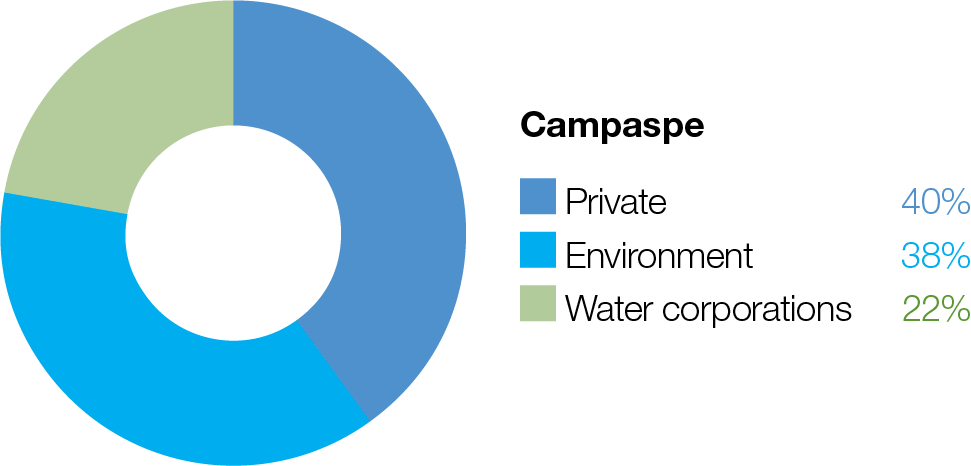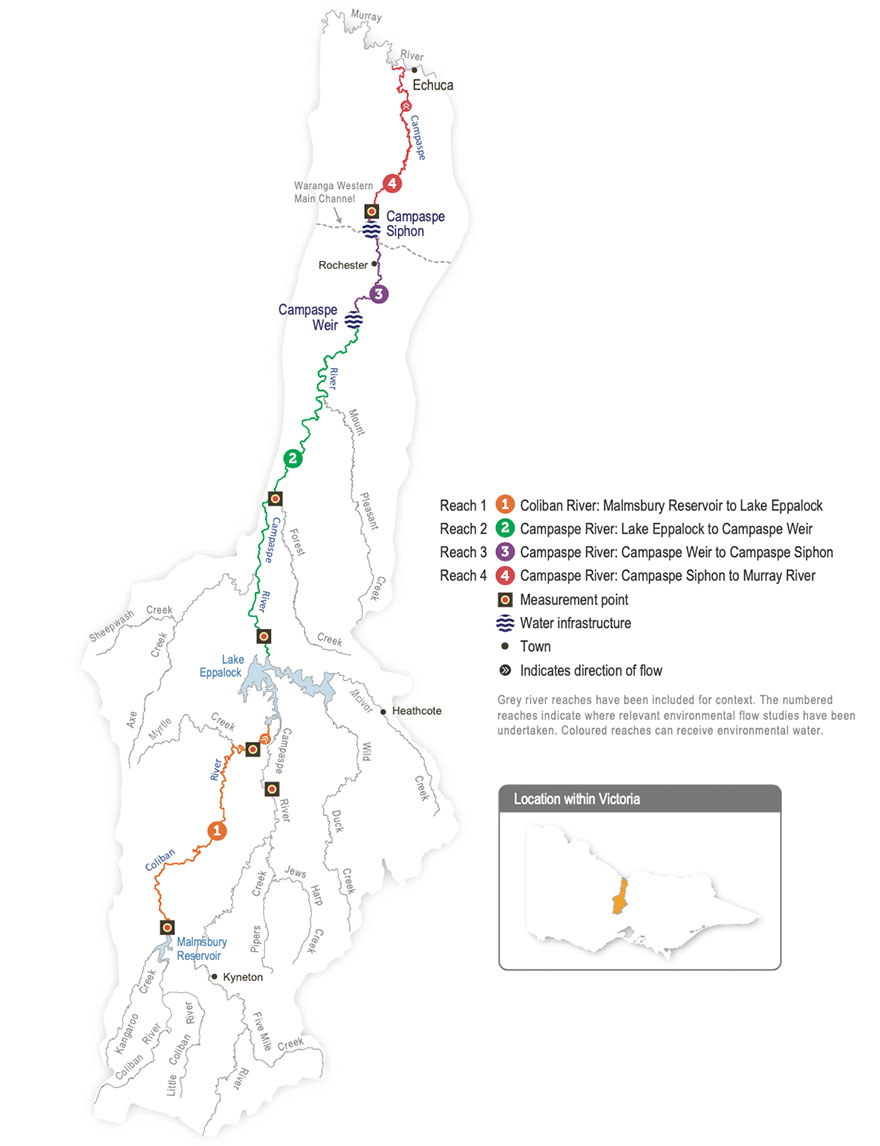Below Lake Eppalock, the major in-stream structure is the Campaspe Weir, which was built to divert water to the Campaspe Irrigation District. It is no longer used for water diversion but is a barrier to fish migration. Gates on the weir provide some degree of control over the flow, but greater flow spills over the weir. The Campaspe Siphon, just below Rochester, is part of the Waranga Western Channel, which carries water from the Goulburn system to western Victoria. Water can be released from the Waranga Western Channel into the lower reaches of the Campaspe River, but the siphon is another barrier to fish migration when there is low-to-moderate flow.
The flow below Lake Eppalock is largely influenced by releases from storage and the operation of the Campaspe Weir and the Campaspe Siphon. The Campaspe’s major tributary (the Coliban River) flows through the three Coliban Water storages (the Upper Coliban, Lauriston and Malmsbury reservoirs) before reaching Lake Eppalock. Water for the environment is held and released from Lake Eppalock, with some limited ability to regulate flow further downstream at the Campaspe Weir.
Water for the environment is released from Lake Eppalock to support aquatic plants and animals in and along the Campaspe River. It can be supplemented by water for the environment delivered via the Waranga Western Channel at the Campaspe Siphon, which provides important flexibility to meet environmental demands in reach 4. Water for the environment is primarily used in the Campaspe River to improve the magnitude and variability of flow during winter and spring, but it is also used to deliver critical flow in summer and autumn that is not met or exceeded by operational deliveries. Primary flow measurement points are at Barnadown (reach 2) and below the Campaspe Siphon (reach 4).
Goulburn-Murray Water transfers operational water from Lake Eppalock or through Waranga Western Channel to customers in the Murray River and to downstream storages (such as Lake Victoria). These inter-valley transfers (IVTs) usually occur in summer and autumn and, depending on the rate of delivery, can either support or compromise environmental flow objectives. High IVT flows delivered at a time when the Campaspe River would naturally have low flow may reduce the amount of suitable habitat for juvenile fish, which rely on protected, shallow areas of water near the edge of the river channel. Sustained high IVT flows in summer can also drown recruiting streamside vegetation. Storage managers and the North Central CMA have been working cooperatively to enhance the positive effects and limit the negative effects of IVTs on native plants and animals in the Campaspe River. For example, IVTs are sometimes delivered in a pattern that meets summer low-flow and fresh requirements, thereby reducing demand for the environmental entitlement. IVTs have also been released in a pattern to support native fish migration from the Murray River into reach 4 of the Campaspe River without affecting delivery to downstream users.

Proportion of water entitlements in the Campaspe River held by private users, water corporations and environmental water holders on 30 June 2020






